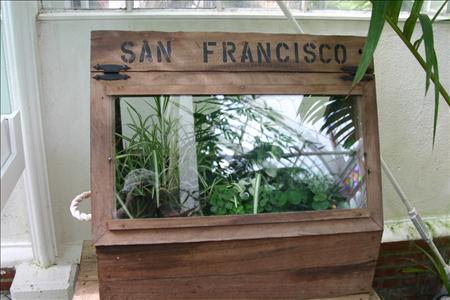
Wardian Cases – Travelling Greenhouses
Posted by on July 11th,2007
Wardian Cases were invented in 1829 by a gentleman by the name of Dr. Nathanial Bagshaw Ward, who was an avid fern collector in London. However, the air pollution in London at the time was so bad (known as ‘pea-soupers’ and caused by the smoke and sulpur dioxide from the coal fires) that his ferns would die off – delicate things that they were. He also kept glass jars with moths in them, and noticed that some of the ferns would make a go of it from within the tightly sealed glass – and so he asked his carpenter to create him a glazed case, shut fast against the air.
They were known as Wardian Cases, after the good Doctor Ward (although invented independantly some years before by A.A. Maconochie, but never publicized), and created a revolution in botanical transportation – whereas previously precious plants would have to be sent in seed or tuber form (or die from the salt and the upheval) now they could be shut in these glass cases (somewhat like the image above, from Flickr user unertlkm) and would most likely survive the trip. Of course, such a stern and practical version wouldn’t survive the Victorians and multiple ornate and detailed styles emerged. Apparently they do very well these days too, requiring only infrequent watering, indirect sunlight and occasional airing (good grief – perhaps even I could make one and keep it green!). Personally, I’d love to see one on the back of one of those light-seeking robots – a real traveling greenhouse!